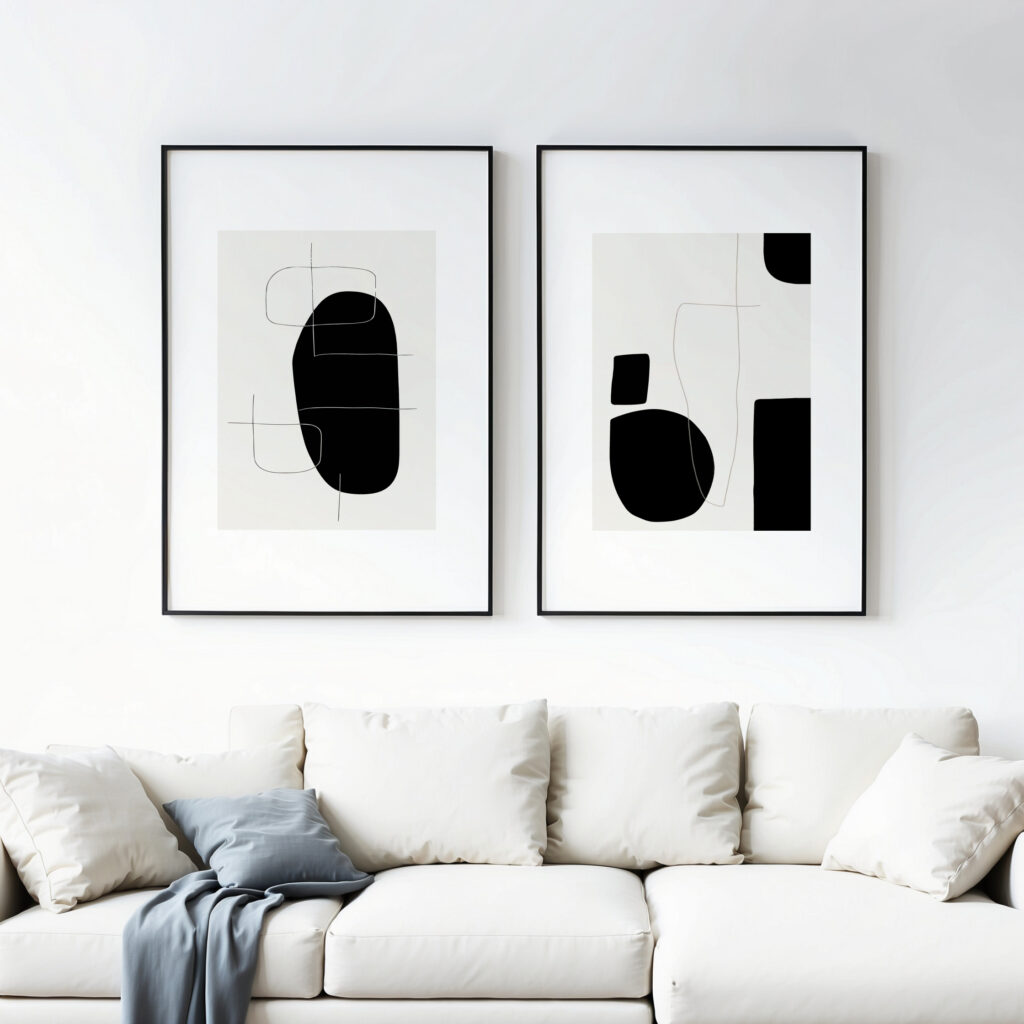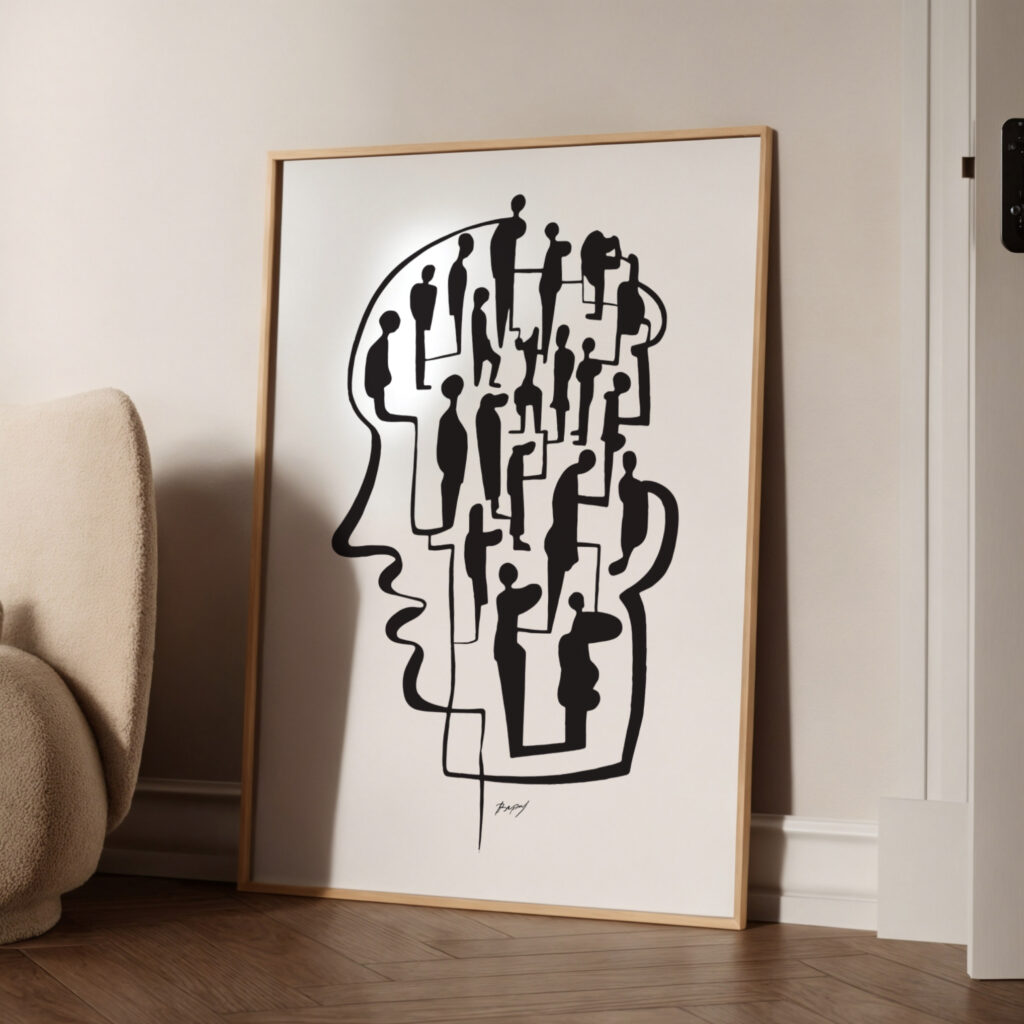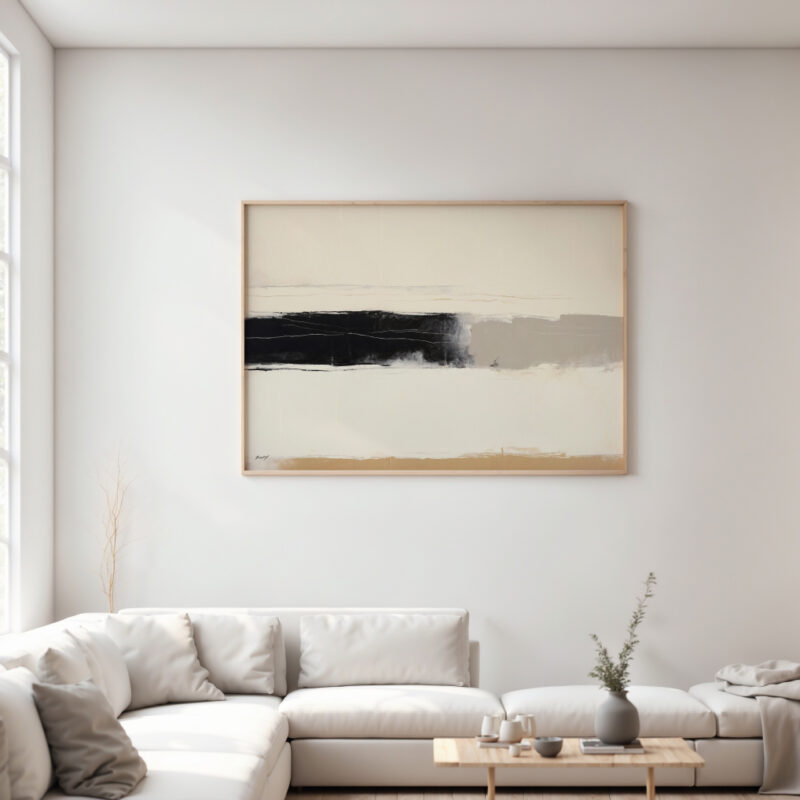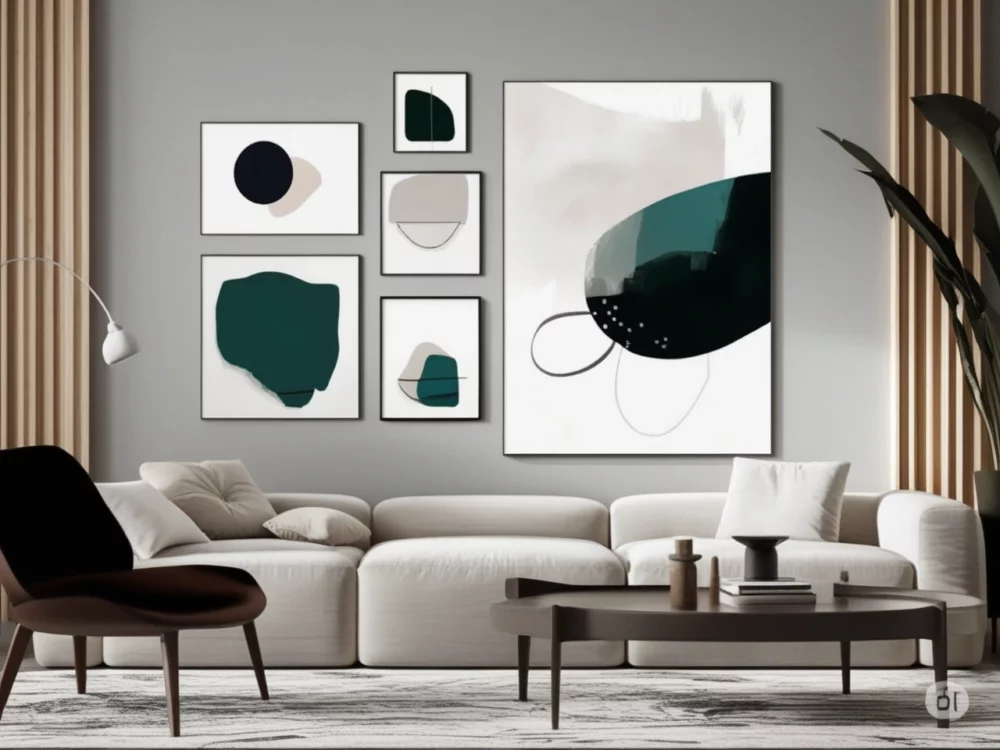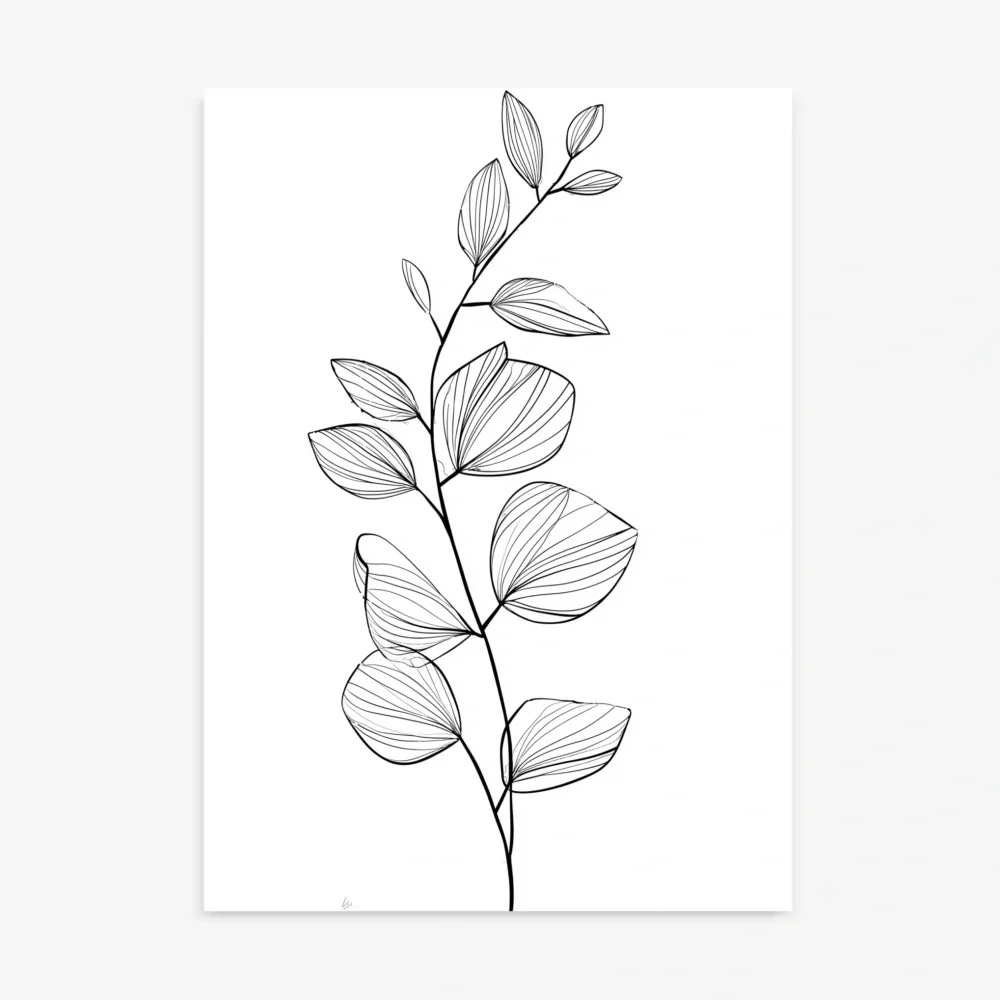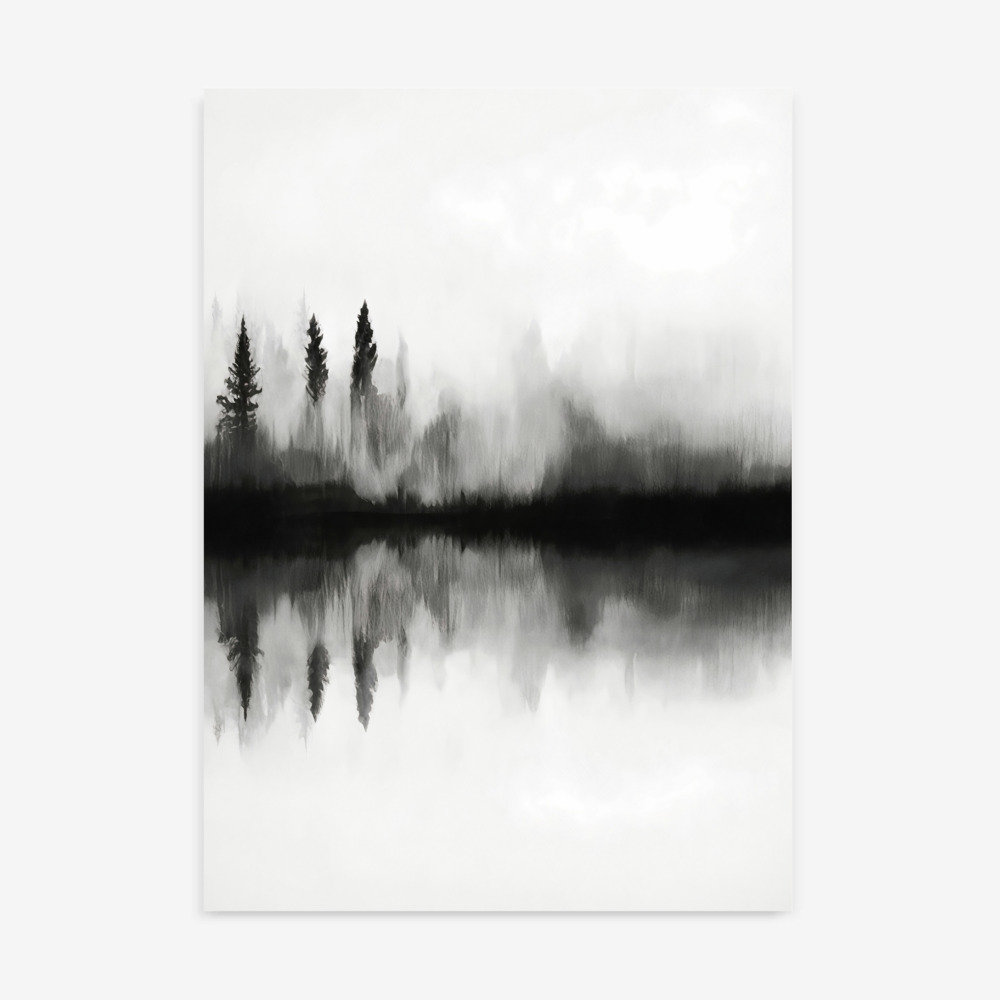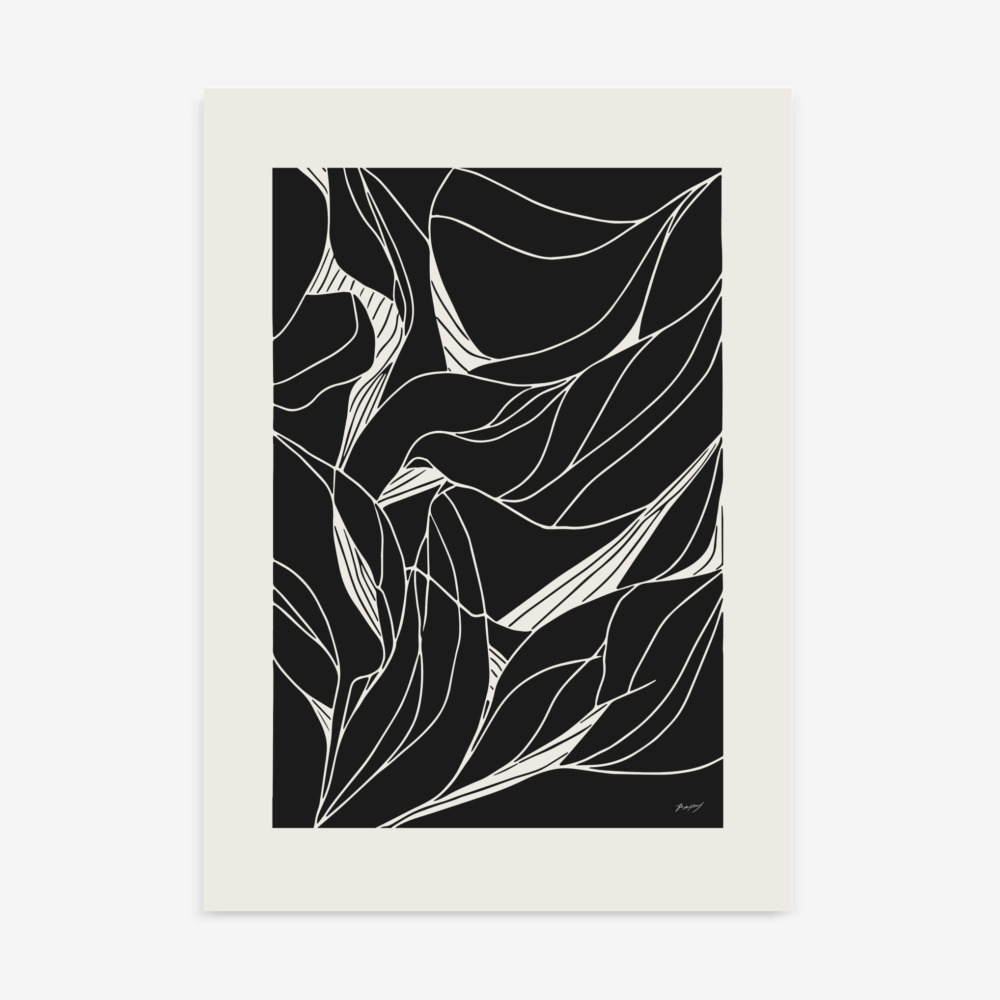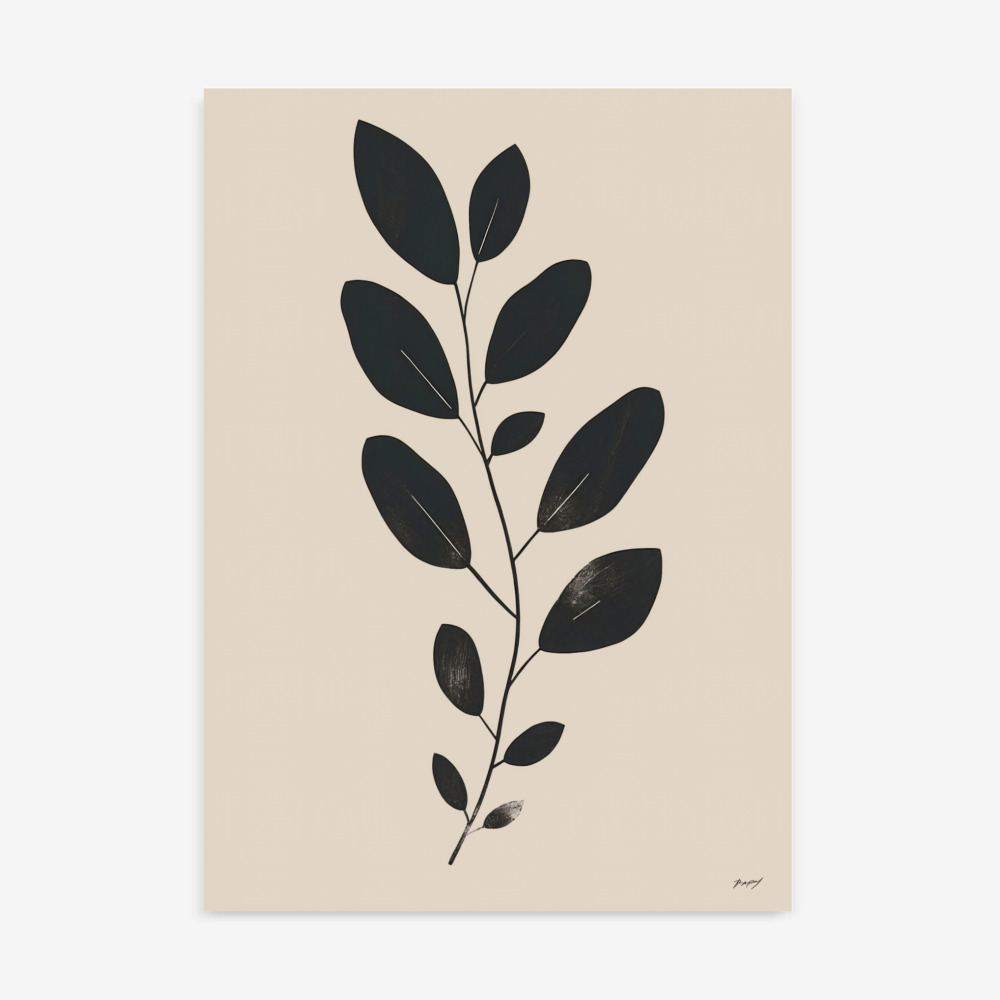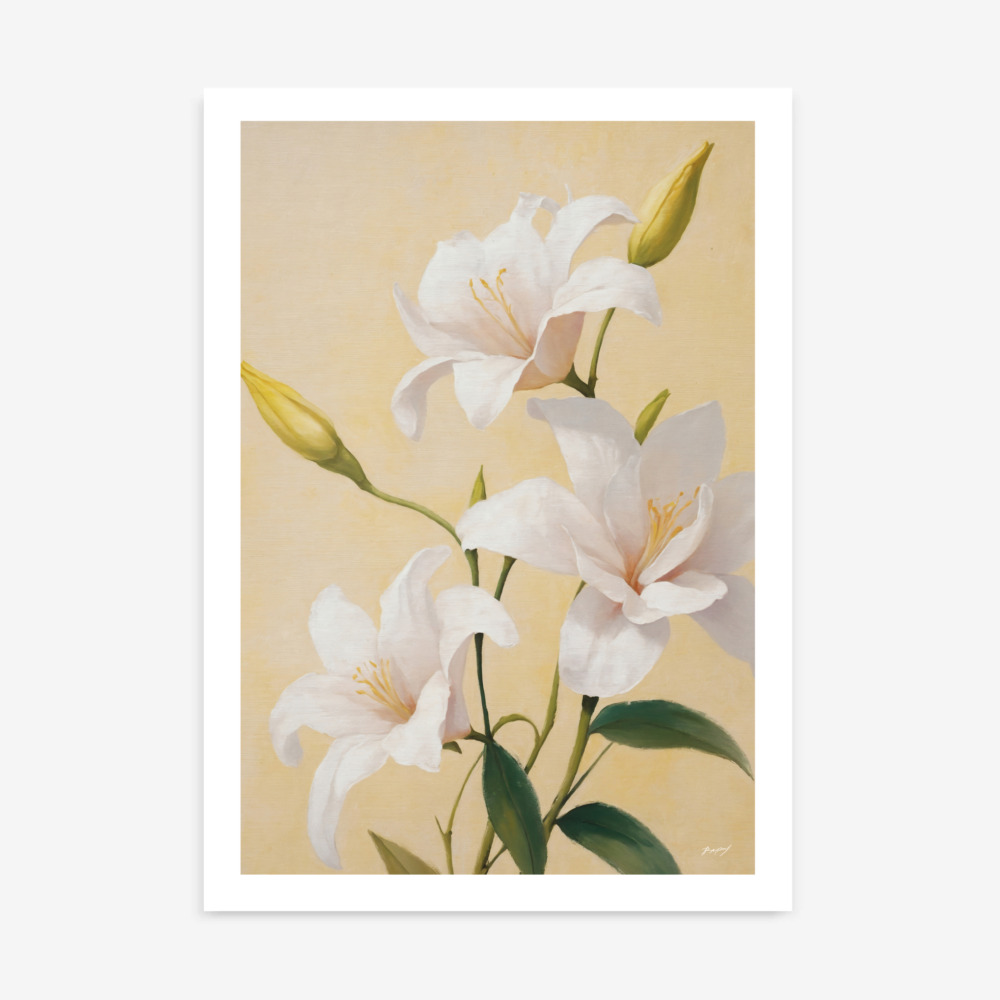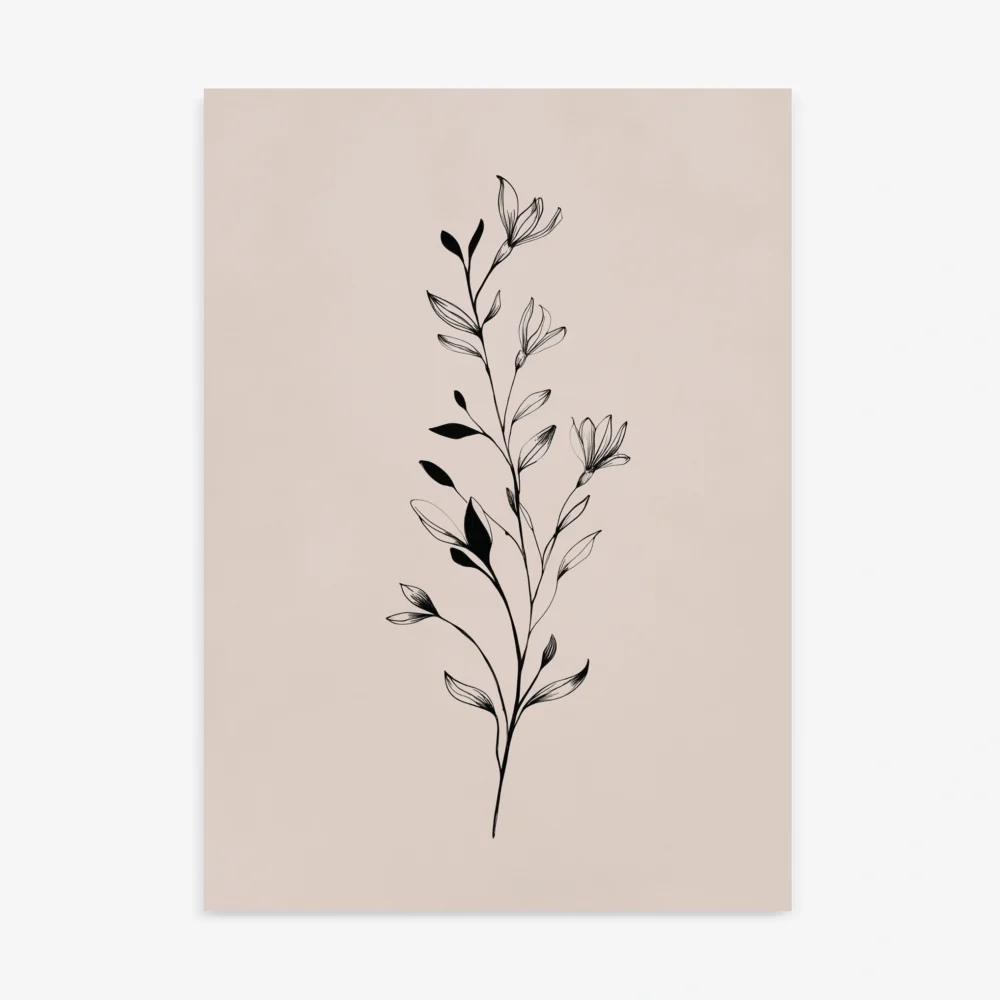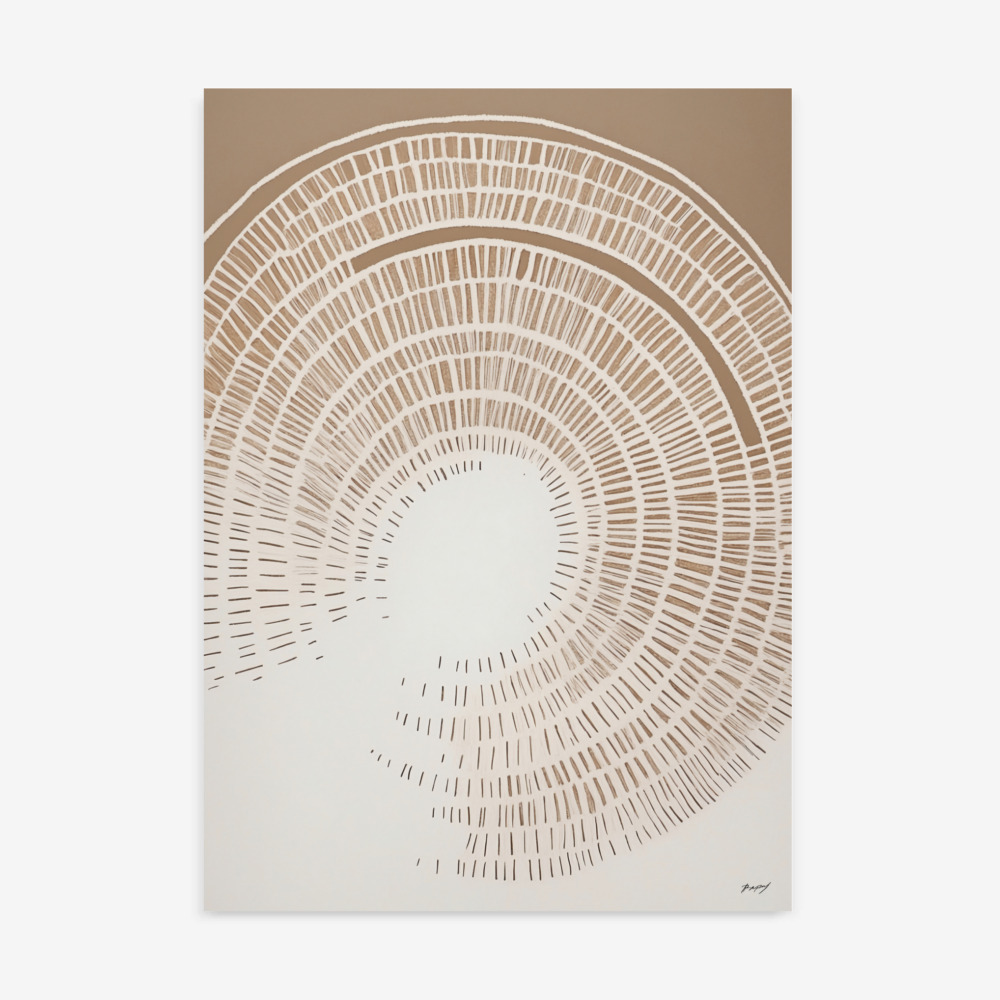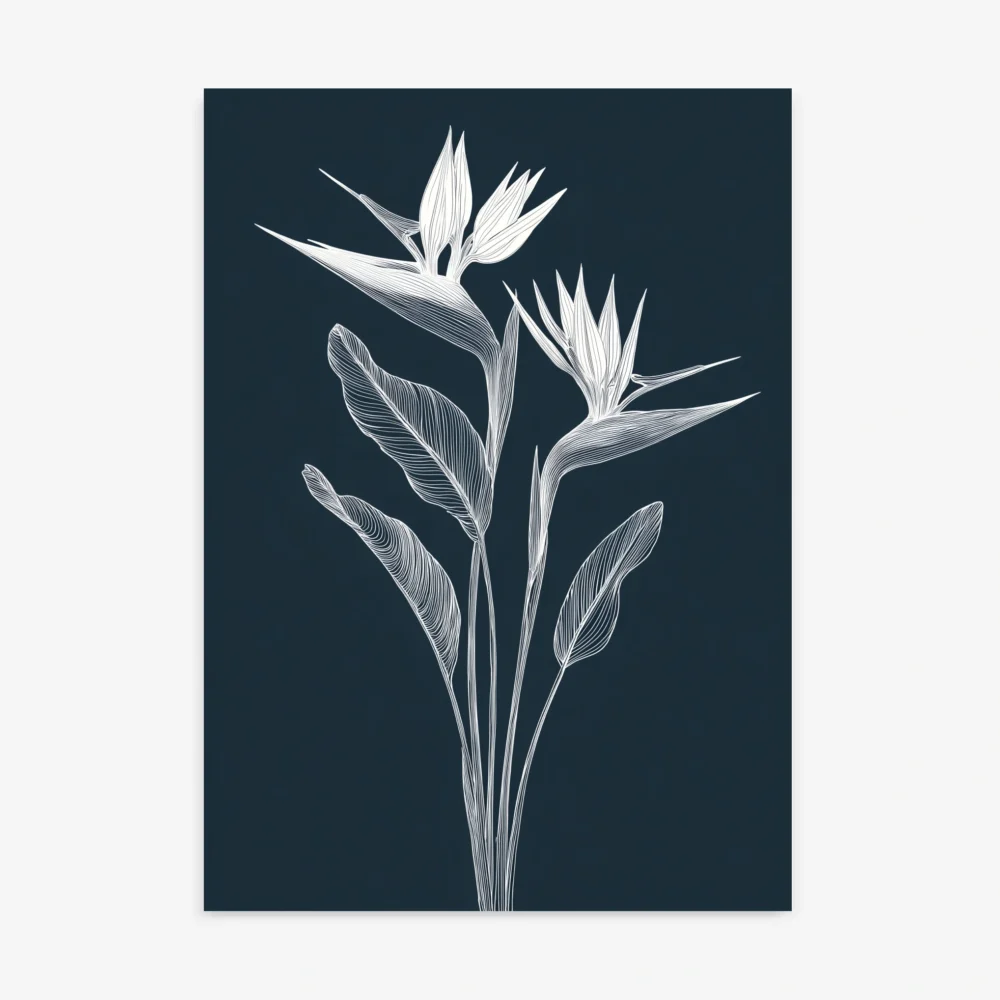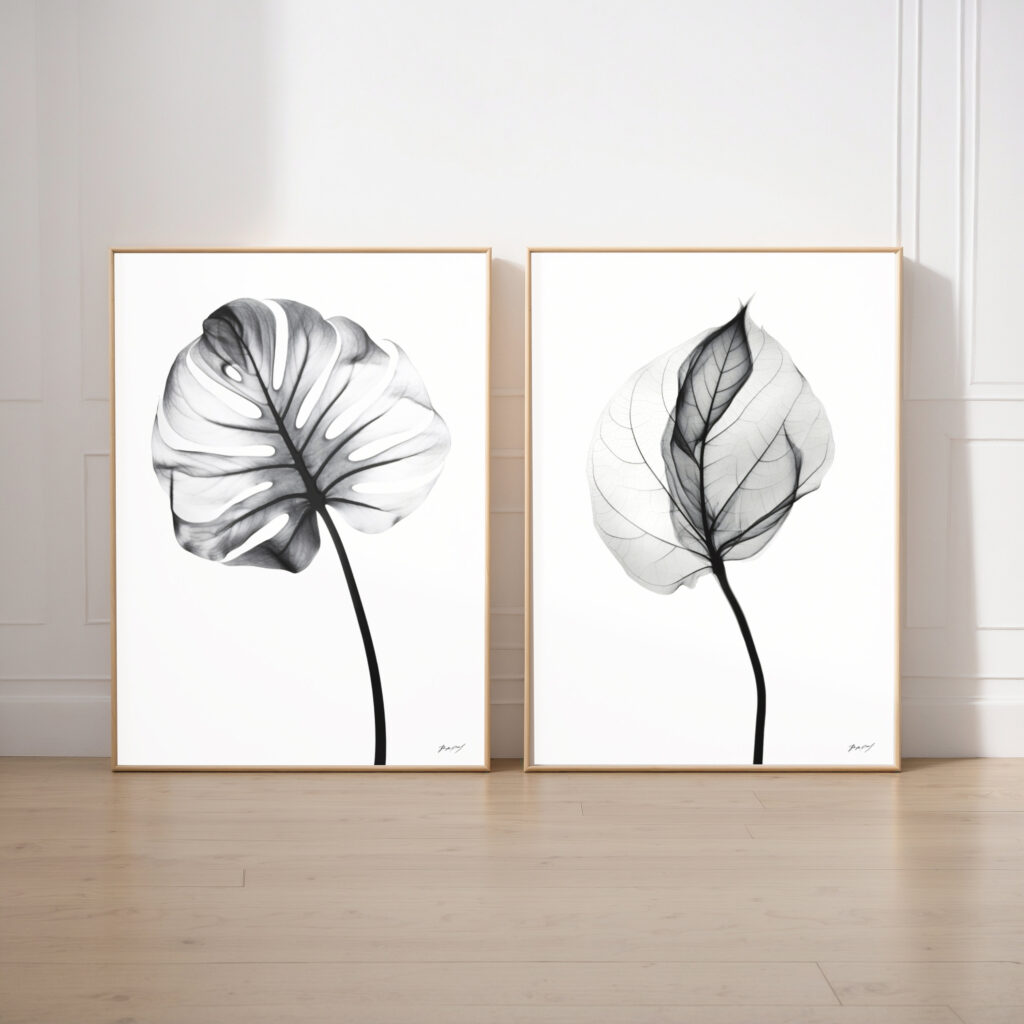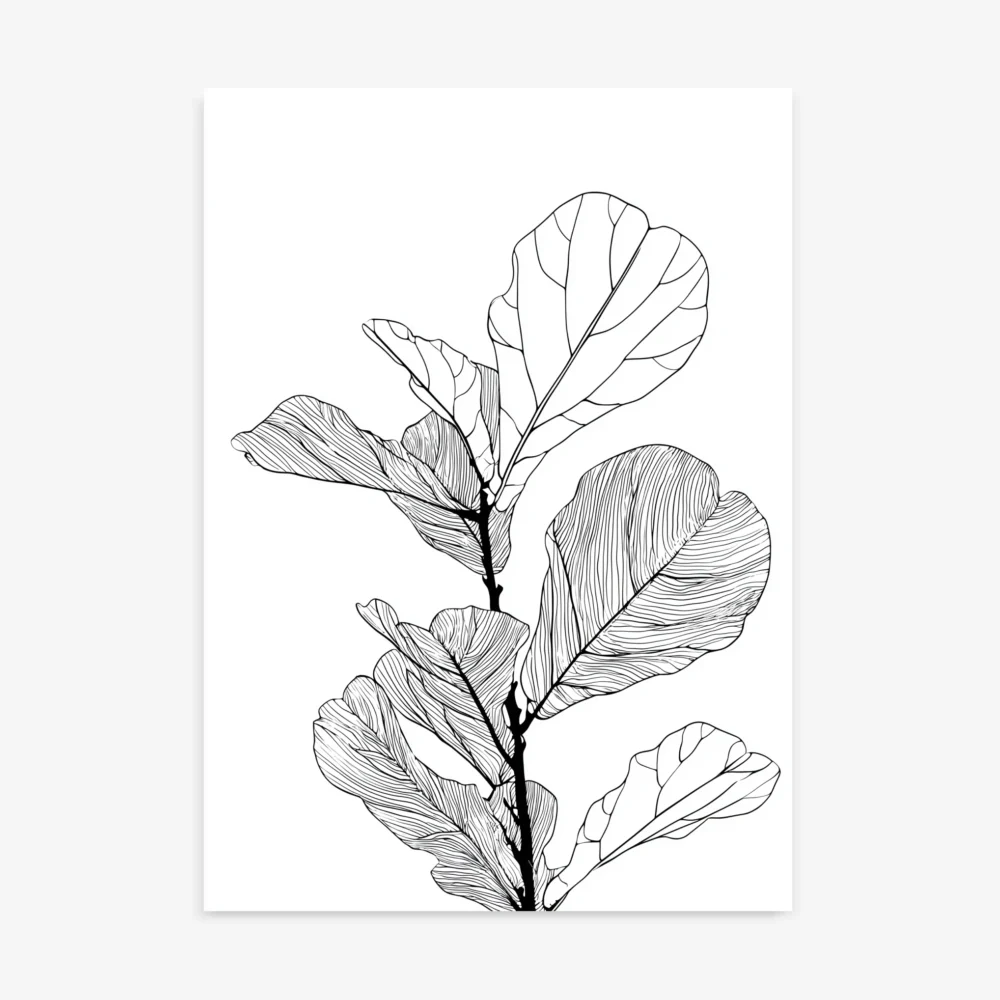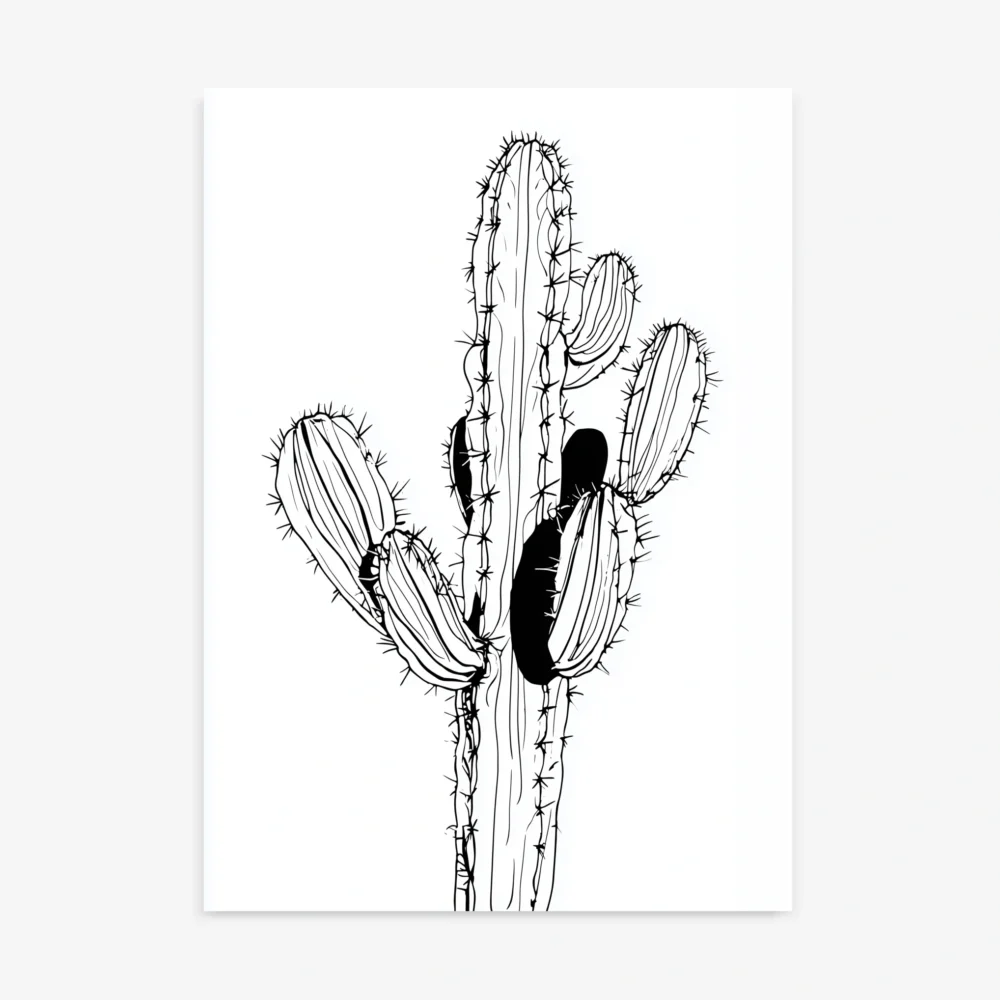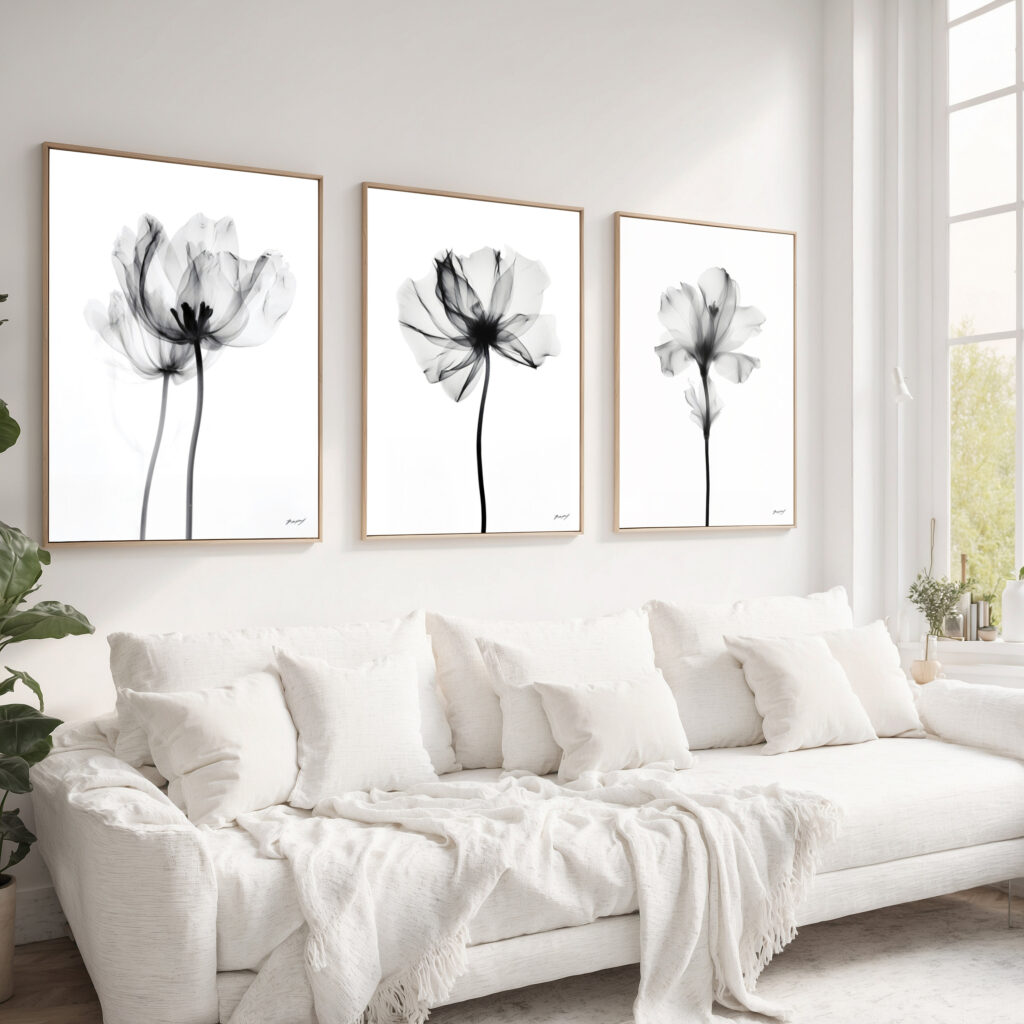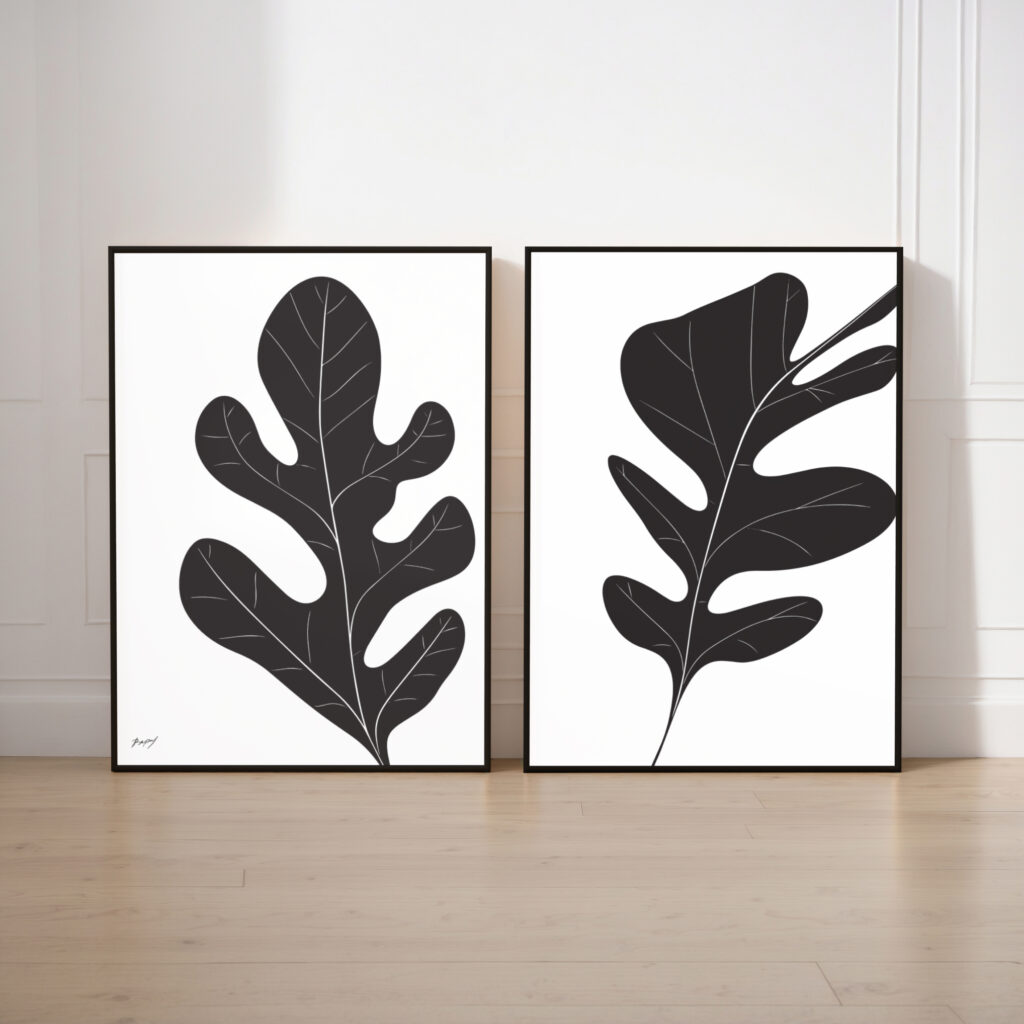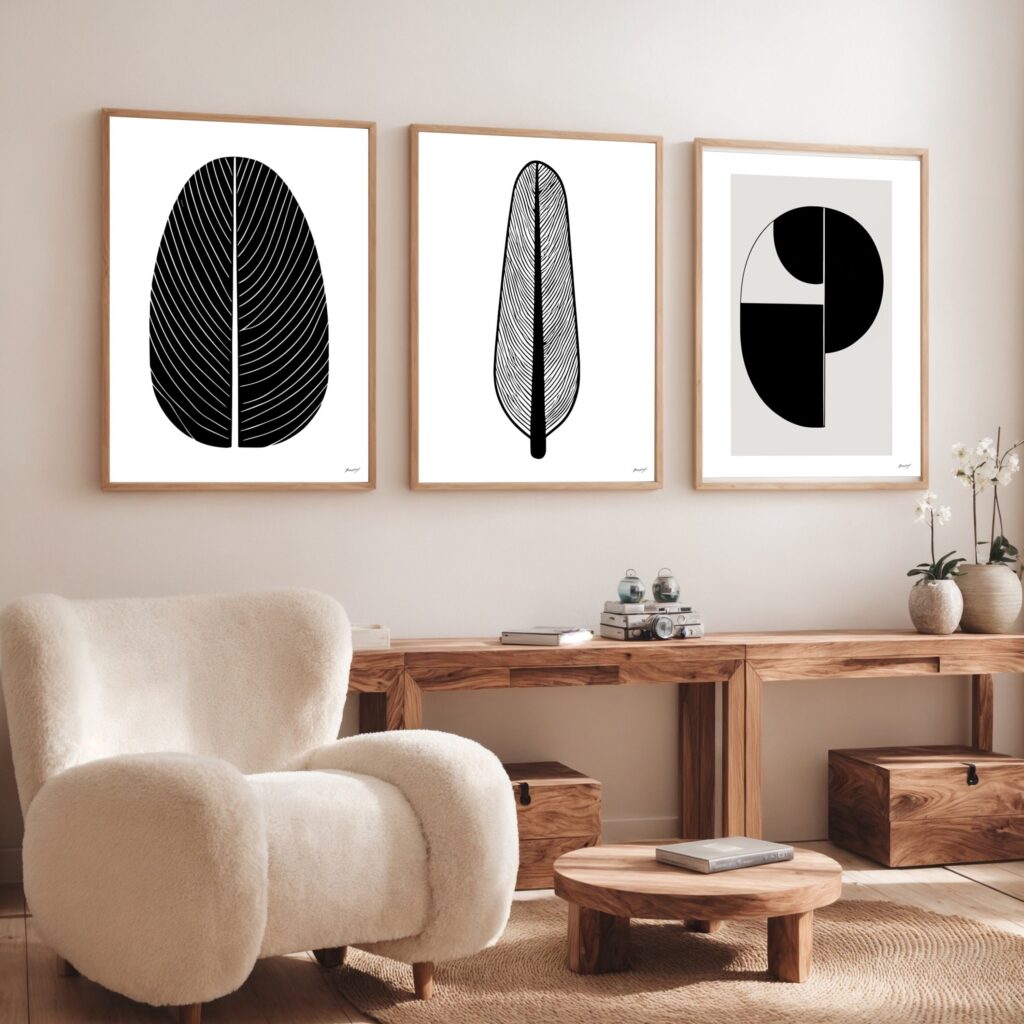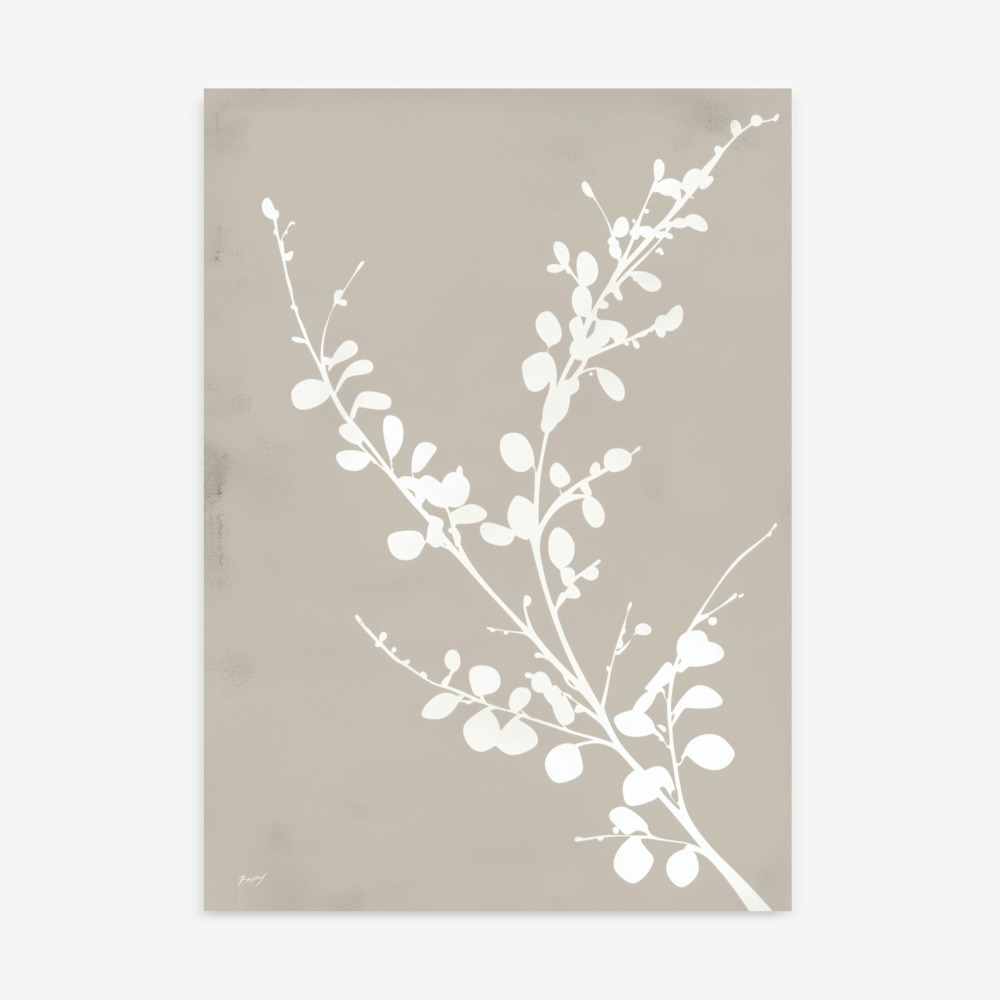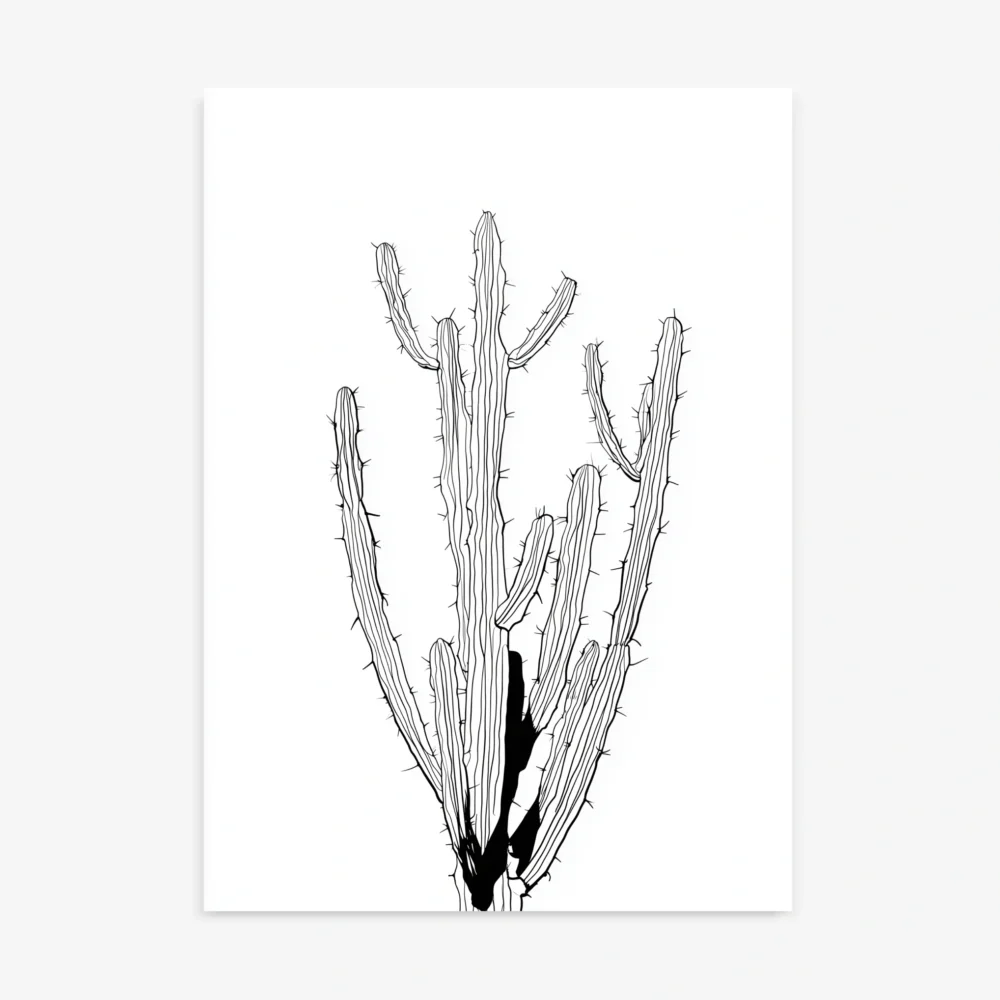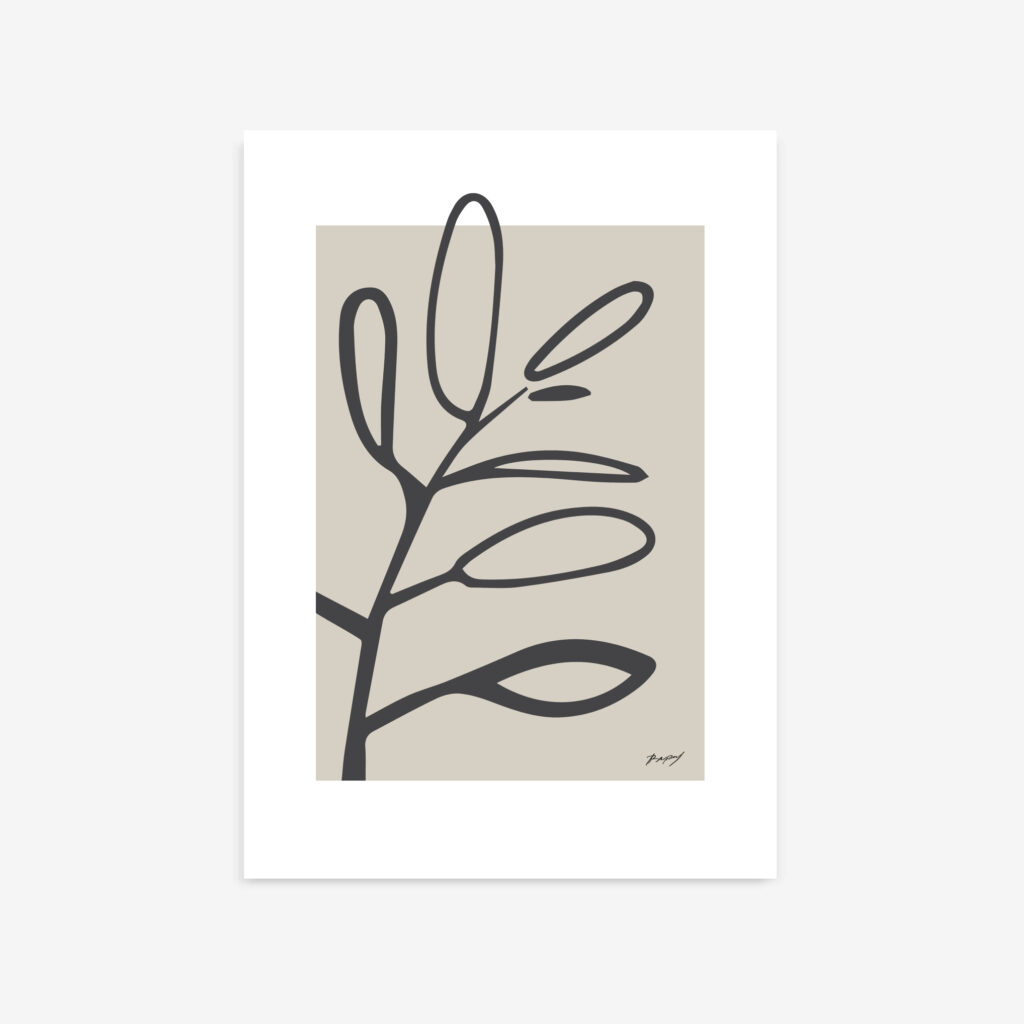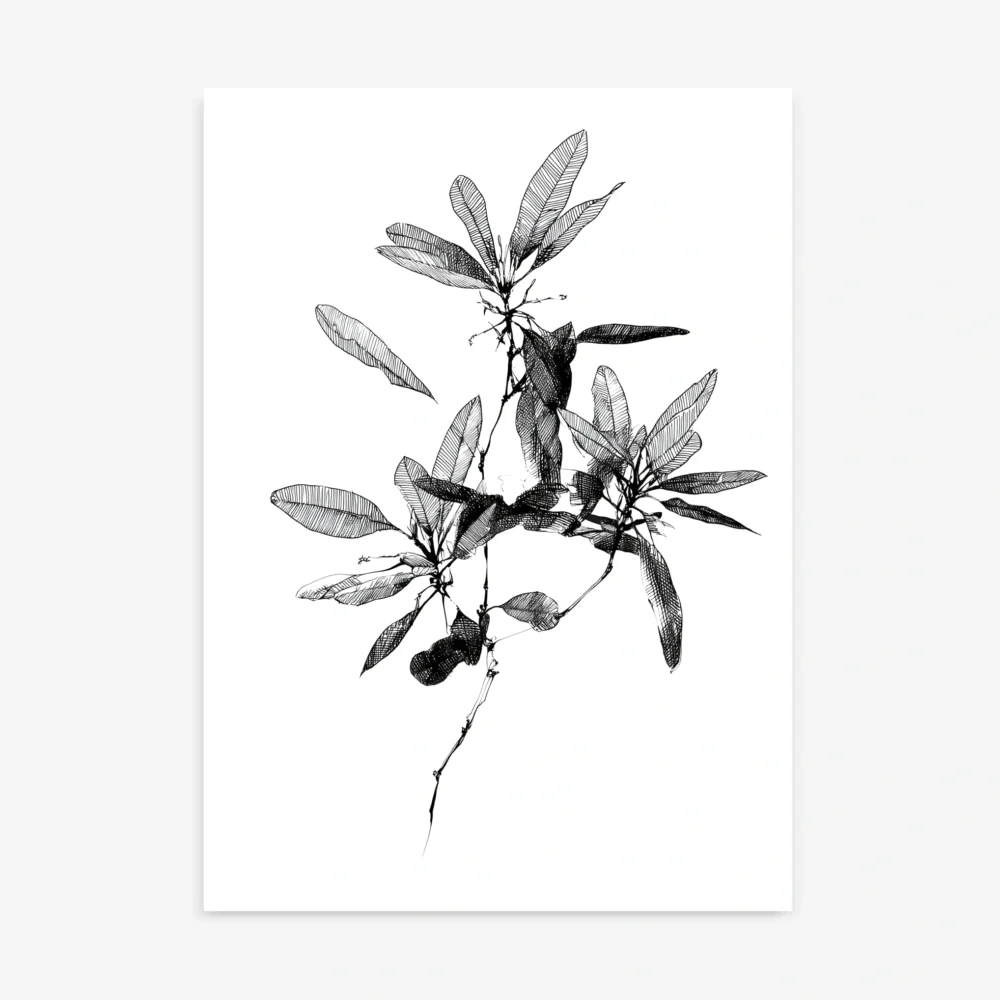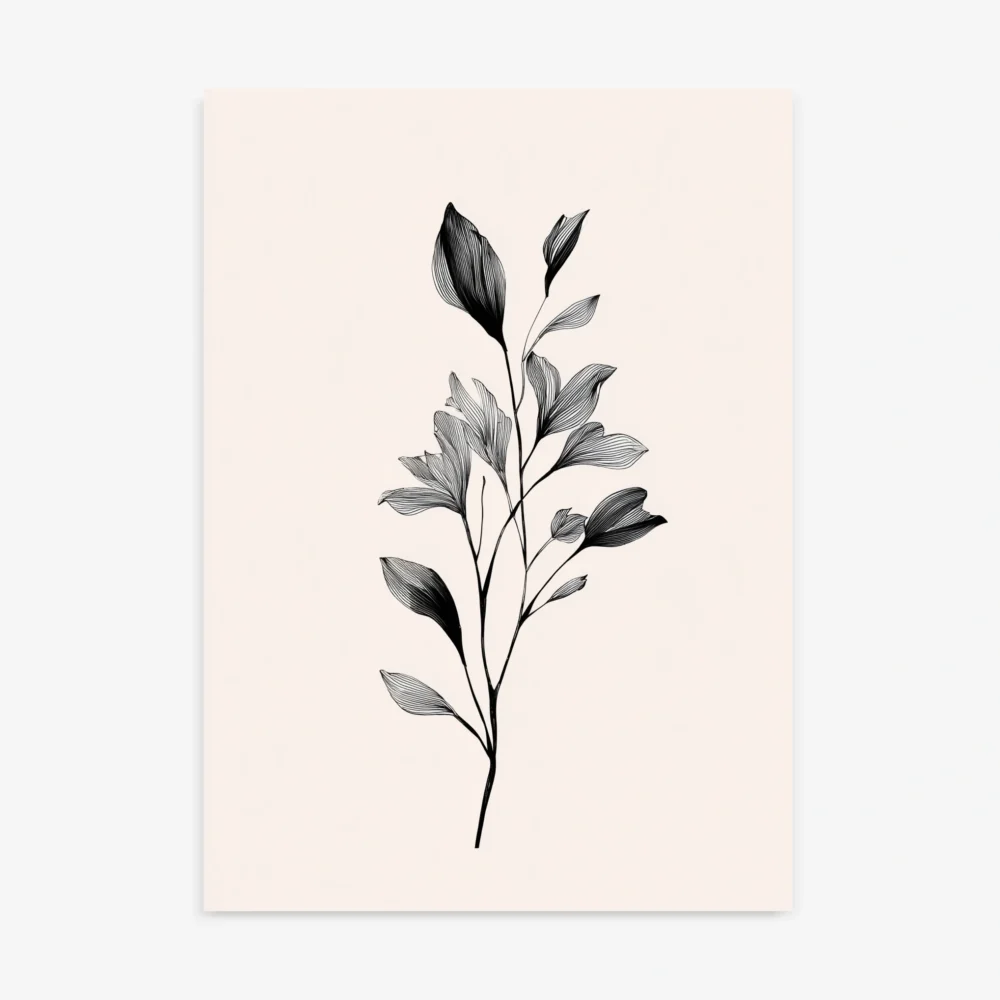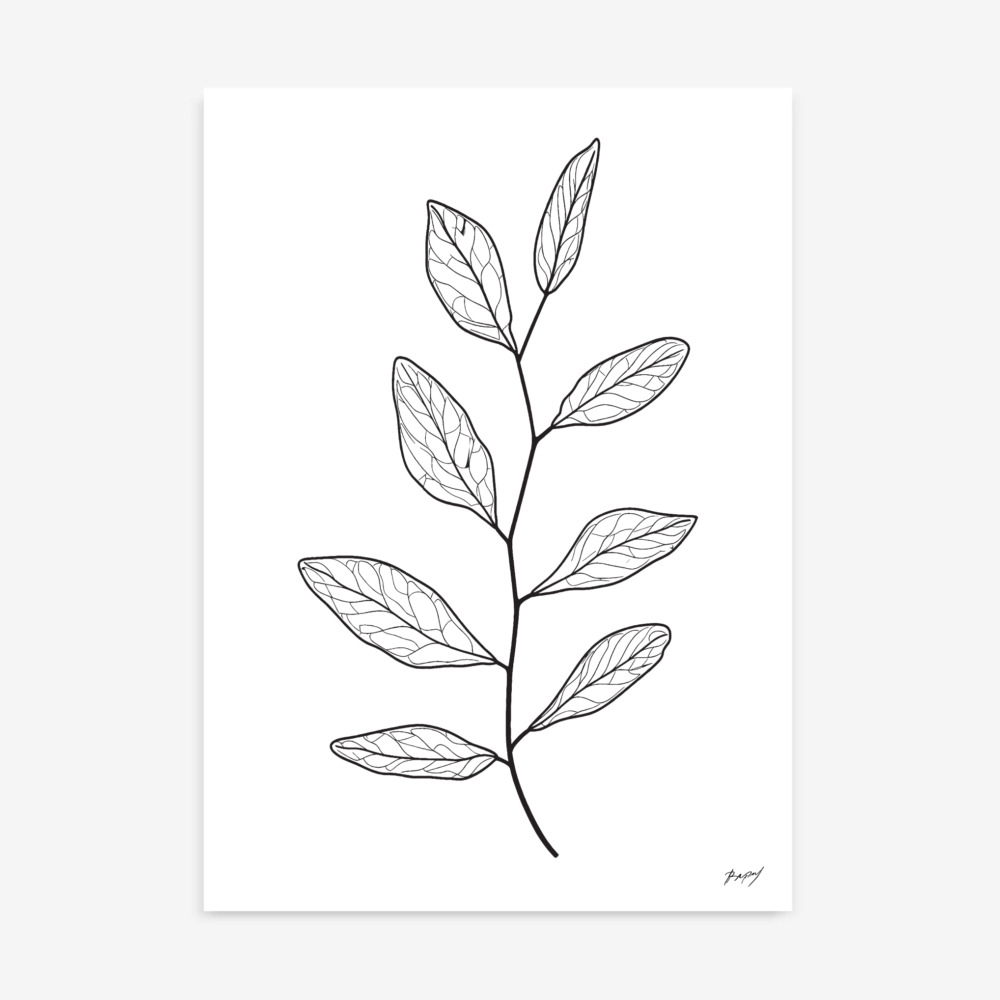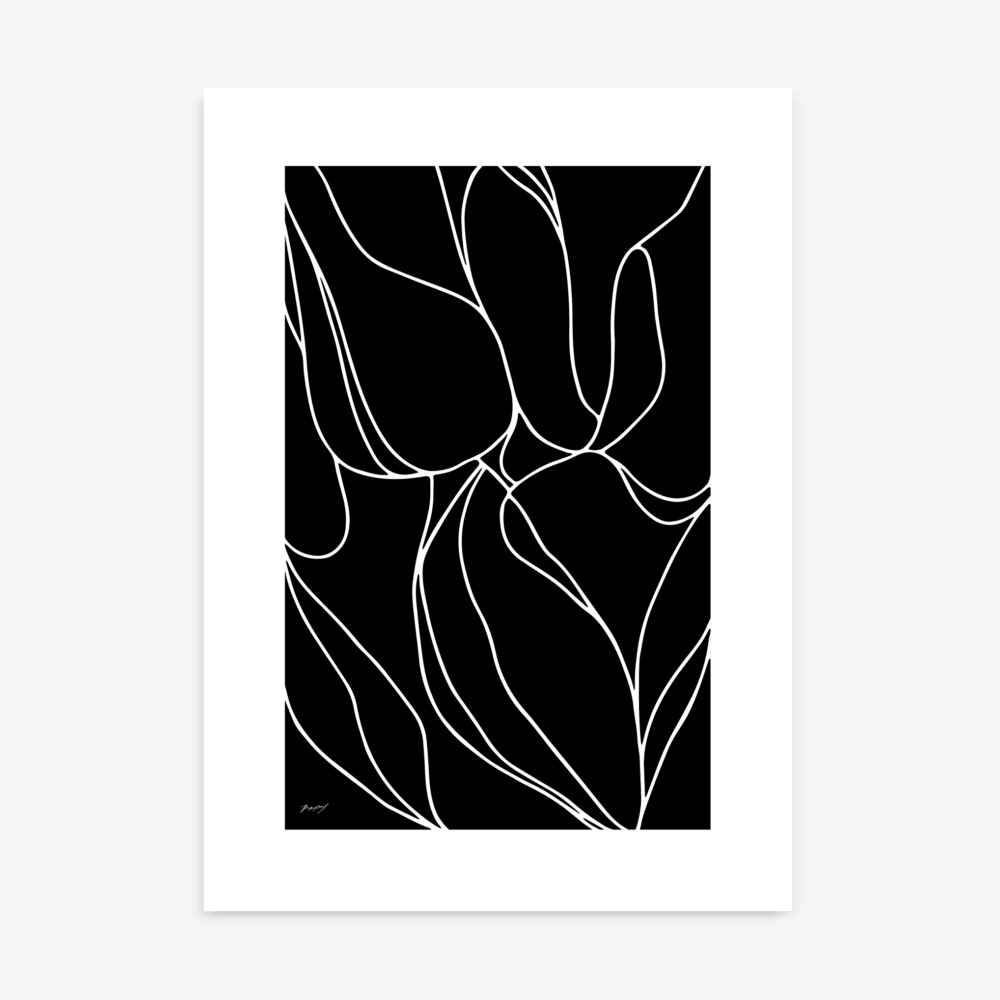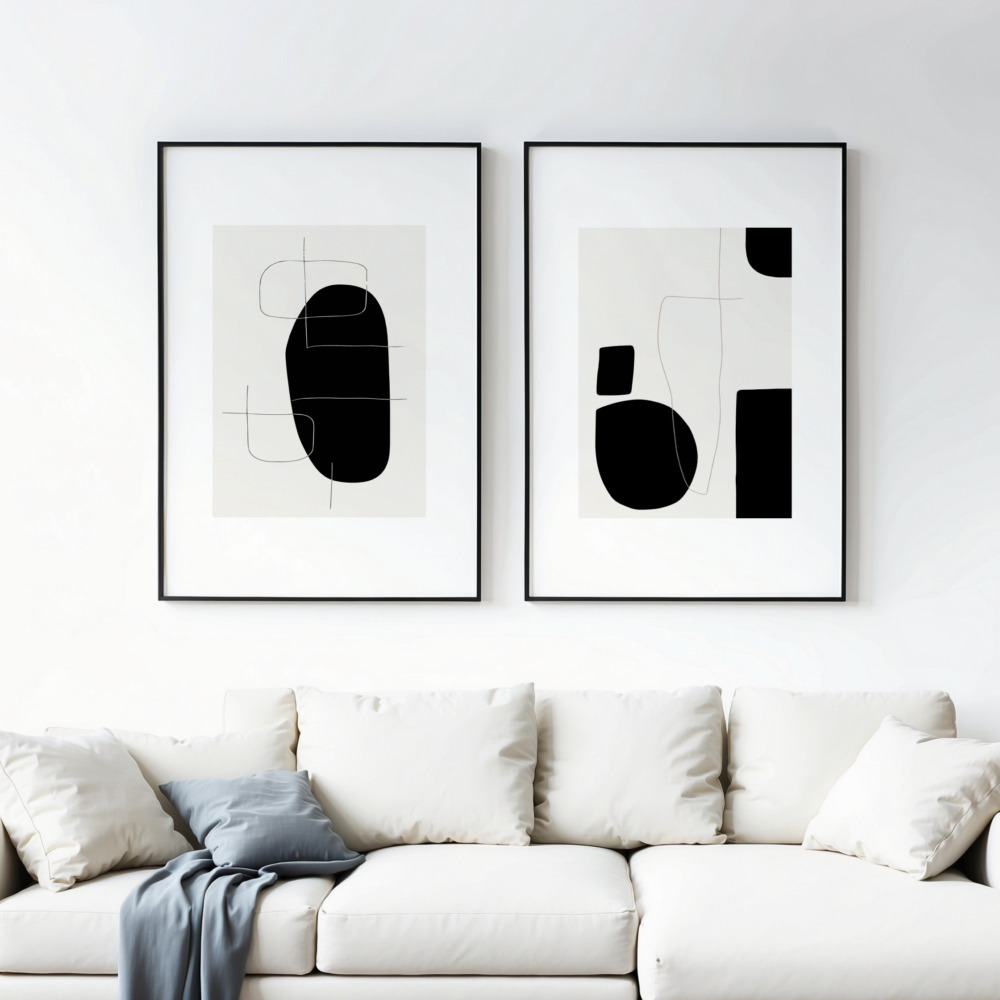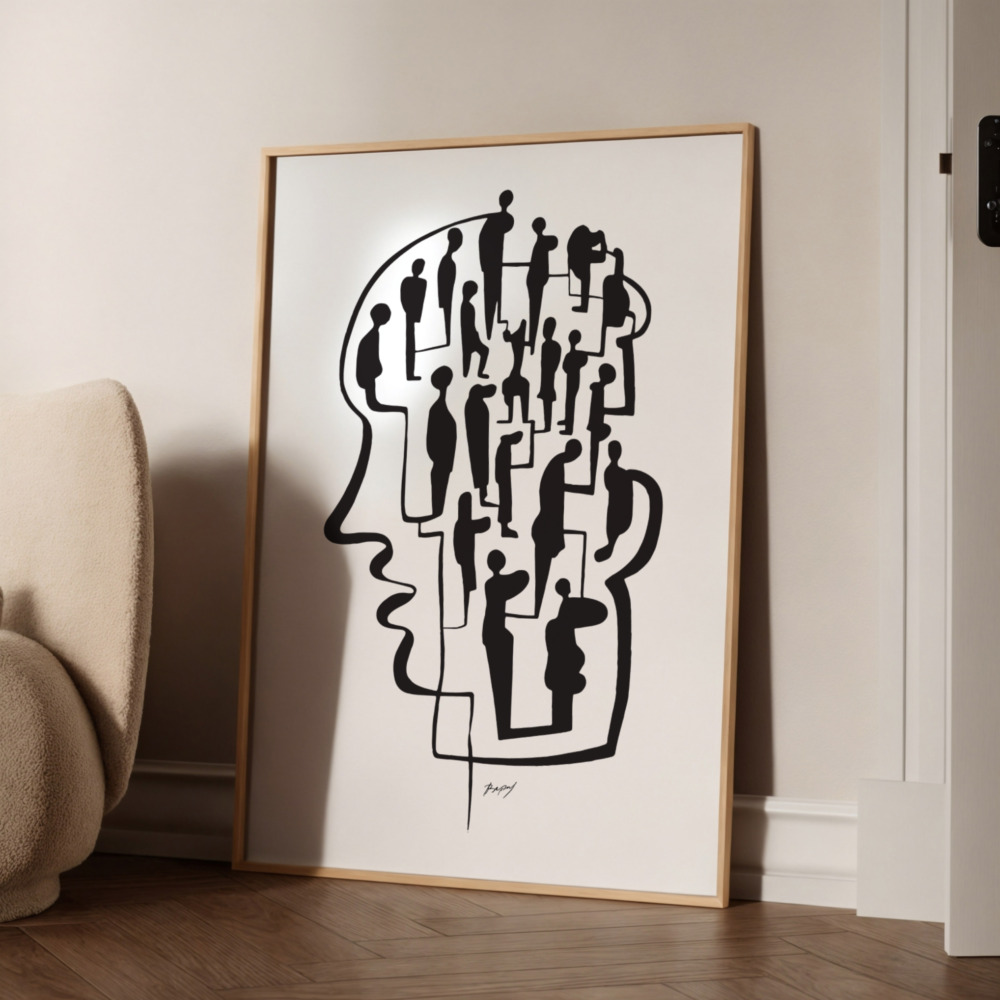There it is. The blank wall. It stares back at you, a vast expanse of unfulfilled potential. In a modern, minimalist home, the blank wall is both a blessing and a curse. It’s a testament to your love for clean, uncluttered spaces, but it can also feel stark, cold, and impersonal. The challenge is immense: how do you add personality, warmth, and a focal point without compromising the very aesthetic you’ve worked so hard to create?
The answer is not to fill the space with just anything. The answer is intention. And the most powerful tool of intention in a modern home is the thoughtful selection of minimalist art prints.
But choosing wall art can be paralyzing. Questions swarm your mind: How big should it be? Where exactly does it go? What style even is minimalist art? This guide is here to silence that internal chaos. We will walk you through a practical, step-by-step process for transforming your blank walls from intimidating voids into beautifully curated canvases.
Forget guesswork. This is your definitive guide to understanding the themes of minimalist art, mastering the rules of scale and placement, and seamlessly integrating prints to create a home that is not just stylish, but a true sanctuary.
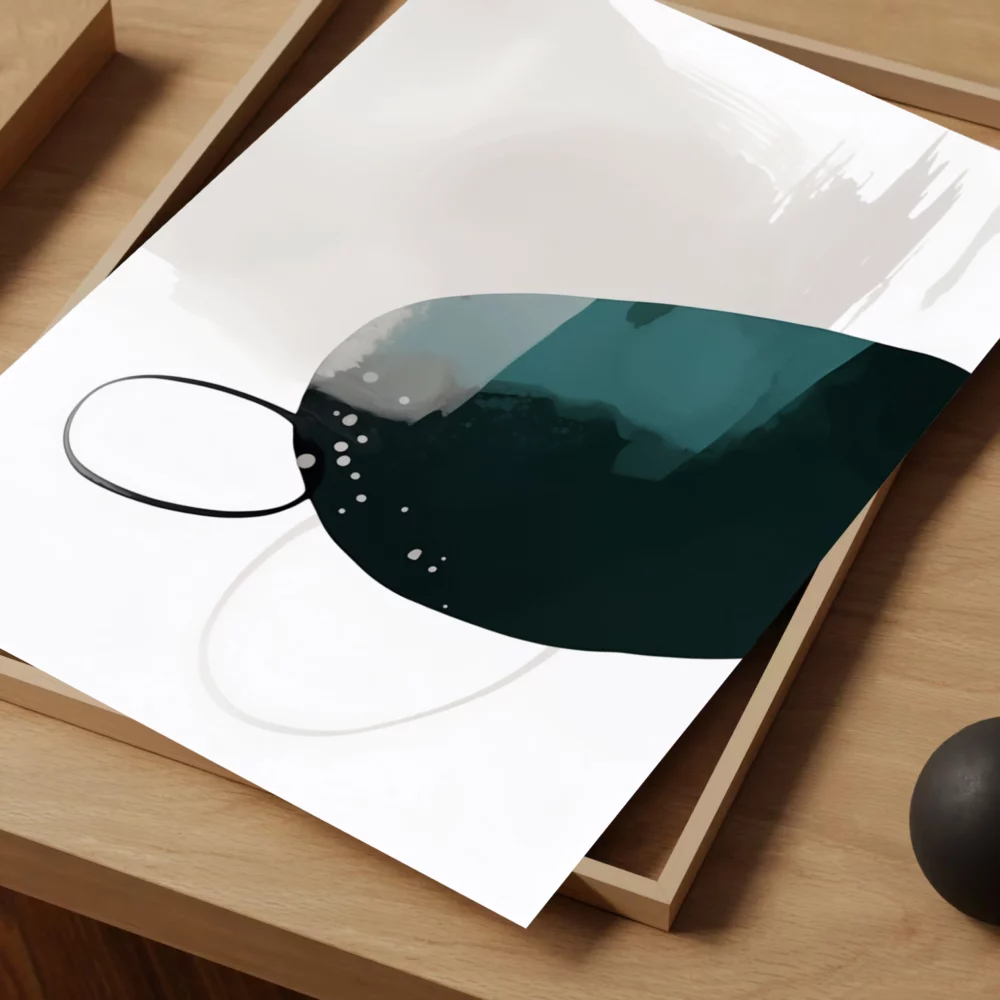
The Minimalist Mindset: Three Questions to Ask Before You Buy
Before you even begin to browse or buy minimalist wall art, the most crucial work happens right in your own room. A successful art choice is not about finding a pretty picture; it’s about understanding the space it will inhabit. Take a moment and ask yourself these three foundational questions:
1. What is the “Job” of This Room?
Every room has a purpose, an energy. The art you choose should support that function.
-
For a Bedroom: The goal is rest, calm, and intimacy. You’re likely looking for minimalist art for a serene atmosphere. Soft line art, calming abstracts with a muted palette, or a tranquil, minimalist landscape would be perfect. The art should whisper, not shout.
-
For a Living Room: This is a social space. The art can be more of a conversation starter. Bold geometric art prints, a striking piece of black and white wall art, or a large-scale abstract can provide a confident focal point without creating clutter.
-
For a Home Office: The goal is focus and inspiration. Art should be engaging but not distracting. Structured geometric prints can create a sense of order, while a simple, elegant abstract can provide a point of contemplation during a screen break.
2. What is My Existing Color Palette?
Your art should feel like a part of the room’s family, not an unexpected guest. Look at the dominant colors in your space—your sofa, your rug, your cushions.
-
For Neutral Palettes (Whites, Greys, Beiges): You have two wonderful options. You can either maintain the calm by choosing art within that same neutral family (think beige abstract on a white wall), or you can use the art to introduce a single, intentional accent color. A print with a pop of dusty rose or sage green can bring the whole room to life.
-
For Palettes with Existing Color: Your job is to find art that complements, not competes. Look for prints that feature a shade or two of your existing colors, or opt for the ultimate neutral: a classic black and white print, which works with absolutely everything.
3. What is the Nature of the Wall Itself?
Consider the canvas you’re working with.
-
A Large, Expansive Wall: This is your opportunity for a bold statement piece. A single, oversized print can anchor the entire room.
-
A Narrow or Awkward Wall: Don’t try to cram a large piece here. This is the perfect spot for a vertical print or a small, curated stack of two smaller pieces.
-
A Wall in a Nook or Hallway: These “in-between” spaces are ideal for a single, small, delightful print that creates an unexpected moment of beauty.
With the answers to these questions, you’ve built a powerful filter. You’re no longer just looking for art; you’re looking for art that belongs.
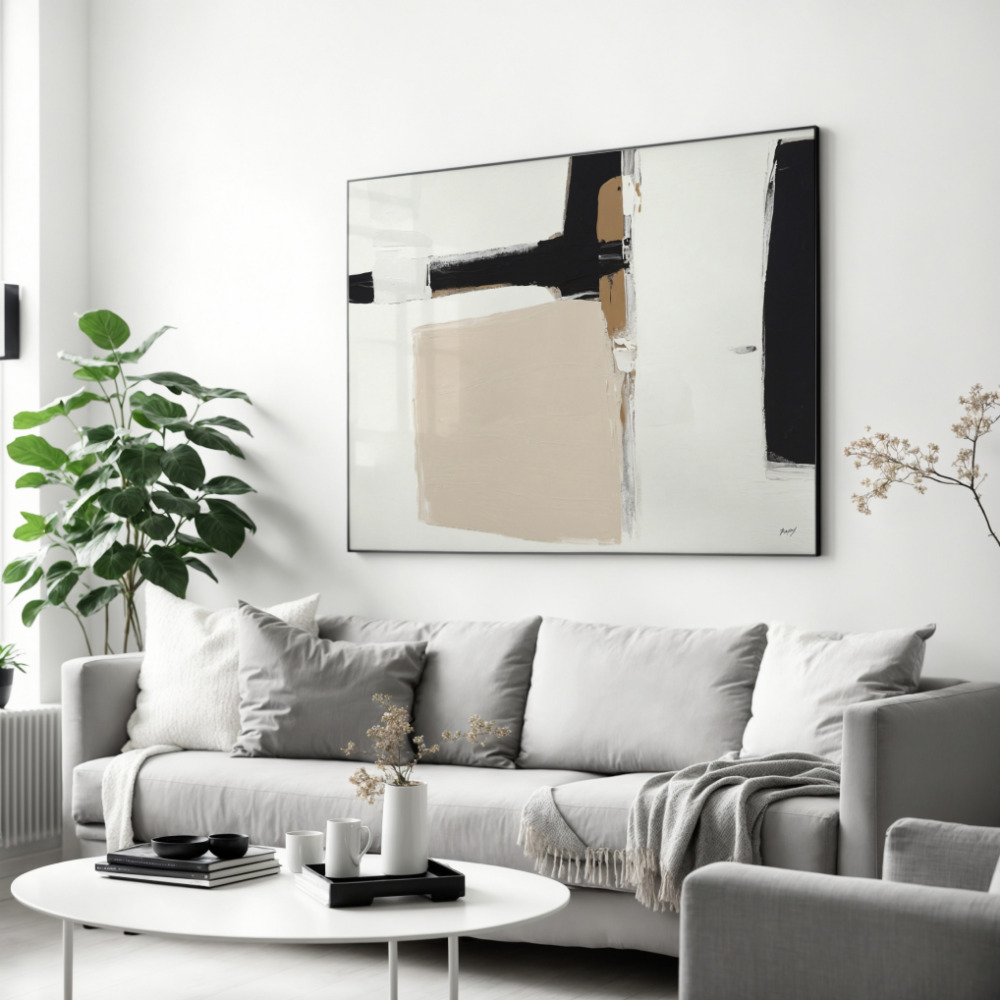
Decoding the Styles: Finding the Minimalist Theme That Speaks to You
“Minimalism” isn’t one single look. It’s a broad philosophy with several beautiful artistic expressions. Understanding these common themes will help you narrow your search and find a style that resonates with you.
1. The Human Touch: Line Art
What it is: Fluid, elegant, and often rendered in a single, continuous stroke, line art distills a subject down to its purest form. Common subjects include faces, human figures, and botanicals.
The feeling it creates: Personal, soft, graceful, and artistic. It brings an organic, humanistic quality to a room.
Best for: Bedrooms, bathrooms, reading nooks, and any space where you want to create a feeling of soft intimacy. It’s a gentle style that adds elegance without demanding attention.
2. The Power of Structure: Geometric Art Prints
What it is: An exploration of pure shape and form. Geometric art features clean lines, balanced compositions, and shapes like circles, arches, and rectangles.
The feeling it creates: Orderly, modern, confident, and sophisticated. It provides a sense of structure and visual stability.
Best for: Living rooms, home offices, and dining areas. It complements modern furniture beautifully and can act as a strong, architectural anchor in a space.
3. The Language of Emotion: Abstract Wall Art
What it is: Non-representational art that focuses on communicating through color, texture, and form. Minimalist abstracts often feature simple compositions, like balanced color blocks or subtle textural gradients.
The feeling it creates: Evocative, sophisticated, and open to interpretation. It can be calming, energetic, or contemplative, depending on the colors and composition.
Best for: Literally any room. A large, calming abstract with a muted palette is perfect for a living room, while a smaller, more textured piece can add immense sophistication to a shelf display.
4. The Timeless Classic: Black and White Art Prints
What it is: The ultimate expression of minimalism. By removing color, black and white art prints force our focus onto the essentials: light, shadow, form, and composition.
The feeling it creates: Timeless, dramatic, graphic, and effortlessly chic. It is the definition of classic, sophisticated decor.
Best for: Everywhere. A high-contrast black and white print can provide a powerful focal point in a neutral room. A black and white gallery wall is the height of sophistication. It’s a can’t-go-wrong choice that will never fall out of style.
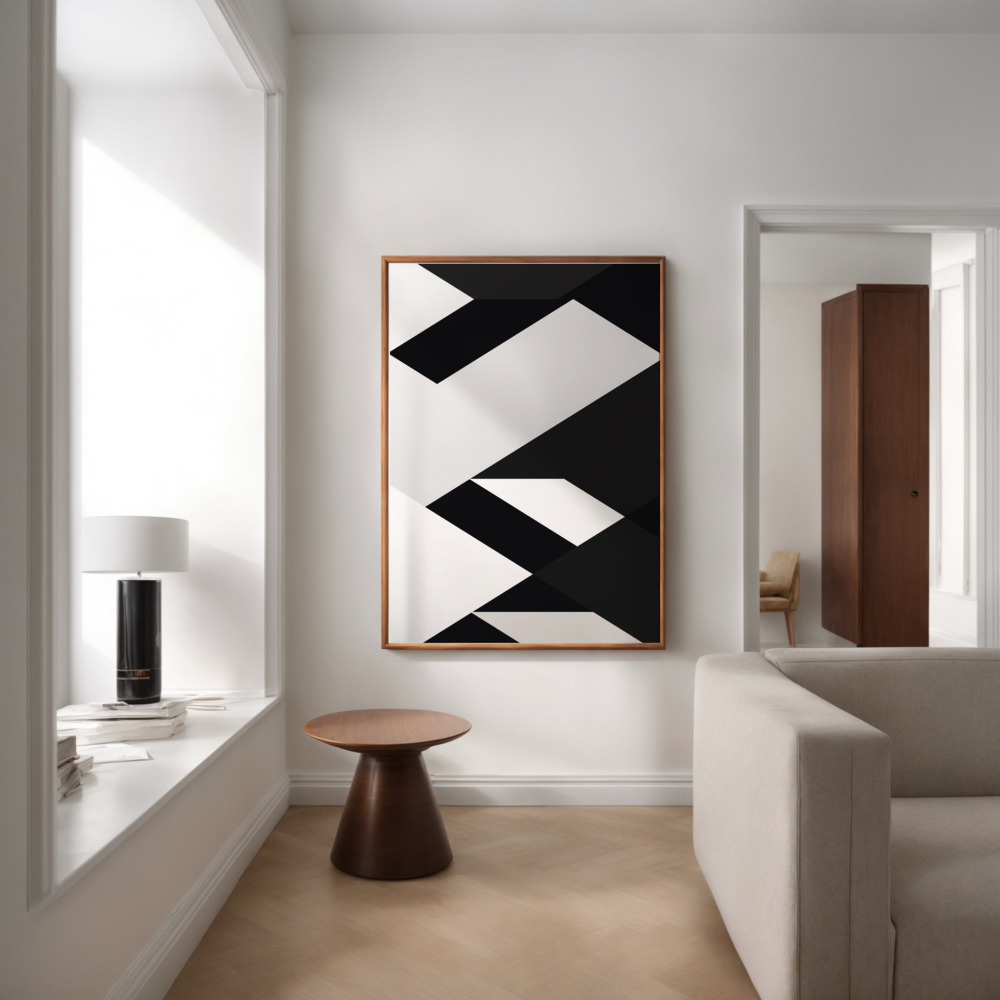
The Practicalities: Mastering Scale and Placement
This is where many people get nervous, but it’s actually quite simple if you follow a few key principles. Getting scale and placement right is the difference between art that looks like a random afterthought and art that looks like it was made for the space.
The Golden Rule of Scale: Go Big or Be Intentional
-
For a Focal Point (Above a Sofa, Bed, or Console): The most common mistake is choosing art that is too small. A tiny print floating on a large wall will look lost and insignificant. Rule of Thumb: Your art should be approximately two-thirds the width of the furniture it is hanging above. If your sofa is 90 inches wide, you should be looking for a single piece or a grouping of art that is around 60 inches wide. Don’t be afraid to go big! A large, confident piece feels intentional.
-
For Small Spaces (Nooks, Hallways, Small Walls): This is where smaller prints shine. A single, beautifully framed 8×10 or 11×14 print can turn a forgotten corner into a charming vignette. Here, the small scale is the point—it draws you in for a closer look.
The Golden Rule of Placement: Hang at Eye Level
-
The 60-Inch Rule: The center of your artwork (or the center of your gallery wall grouping) should be approximately 57-60 inches (about 145-152 cm) from the floor. This is the standard eye level for an average person and is the height used in most galleries. It ensures the art is comfortably viewable and feels connected to the human scale of the room, rather than floating too high or sinking too low.
-
The “Above Furniture” Rule: When hanging art above a piece of furniture like a sofa or a sideboard, you need to visually connect them. Rule of Thumb: The bottom of the frame should be 6-8 inches (15-20 cm) above the top of the furniture. This creates a cohesive unit, preventing the art from looking disconnected from the piece below it.
-
The Art of the Gallery Wall: A minimalist gallery wall is about curation and breathing room.
-
Lay it out first: Arrange your chosen prints on the floor to find a composition you love before you put any nails in the wall.
-
Maintain consistent spacing: Keep the distance between each frame uniform (e.g., 2-3 inches apart).
-
Use consistent frames: Simple, matching frames in black, white, or natural wood will unify the collection and keep it from looking cluttered.
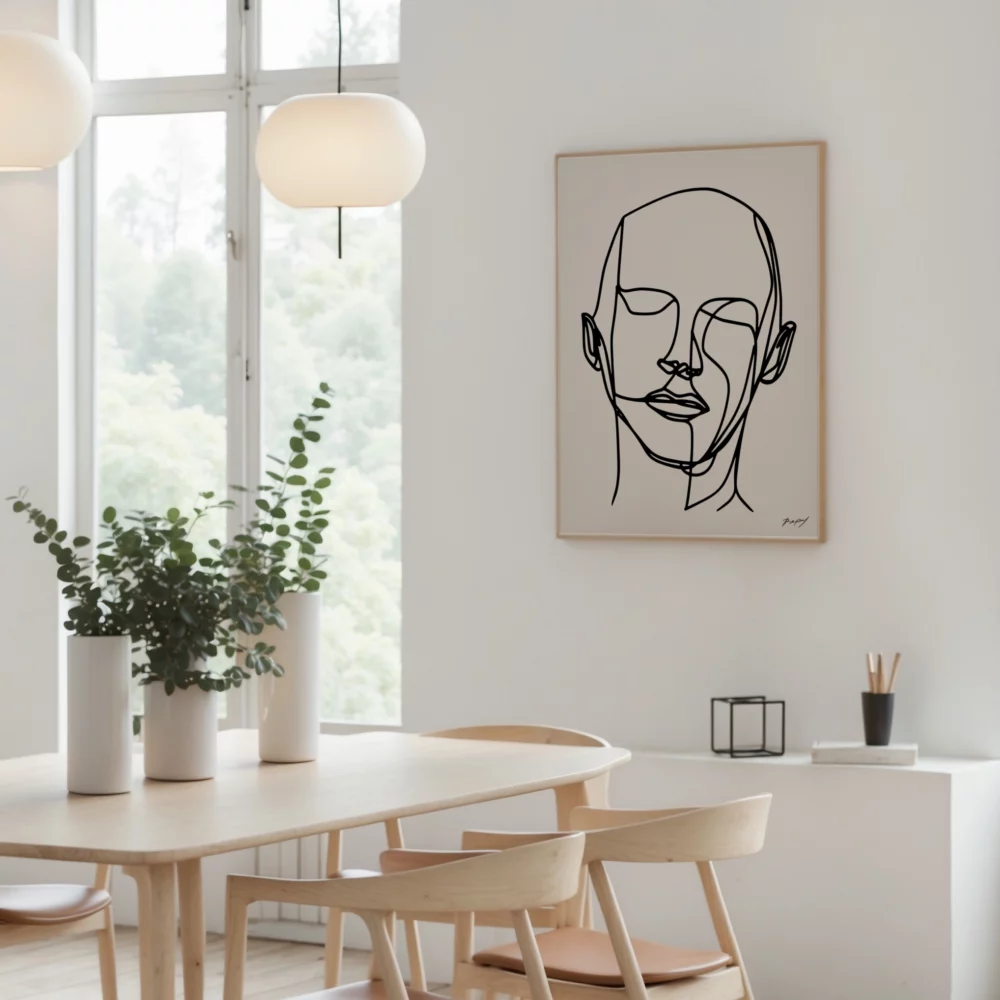
The Modern Solution: Where to Buy Minimalist Art Prints Online
The search for the perfect art no longer requires endless weekends spent trekking through galleries. The rise of online art stores has revolutionized how we decorate. When you decide to buy art prints online, you gain access to:
-
Incredible Variety: You can browse thousands of styles from artists all over the world.
-
Curated Collections: Many shops specialize in specific aesthetics, doing the hard work of curating for you.
-
Affordability: This is a game-changer. High-quality, affordable art prints make it possible for anyone to create a stylish, art-filled home without a massive budget. Good design has become democratic.
Online shops, including curated specialists like Print Studio, offer a seamless way to find pieces that fit the minimalist aesthetic, often allowing you to filter by color, style, and orientation. This makes the process of finding that perfect piece not just easier, but genuinely enjoyable.
Conclusion: Your Wall is a Canvas, Not a Problem
That blank wall doesn’t have to be a source of anxiety. With a little bit of intention and a few guiding principles, it can become your greatest decorative asset. The journey to choosing wall art is a creative process that should be savored. Start with the soul of your room, understand its purpose and its palette. Explore the beautiful and varied language of minimalist art to find a style that speaks to you personally. And finally, embrace the simple, practical rules of scale and placement to hang your chosen piece with confidence.
By following this guide, you are empowered to move beyond the blank wall. You have the tools to make intentional choices, to curate a space that is a true reflection of your taste, and to transform your home into the serene, sophisticated, and deeply personal sanctuary you deserve. Now that you’re armed with the knowledge to choose with confidence, take the next step. Explore the curated collection of minimalist wall art at Print Studio and discover the perfect piece to begin your home’s beautiful transformation.

